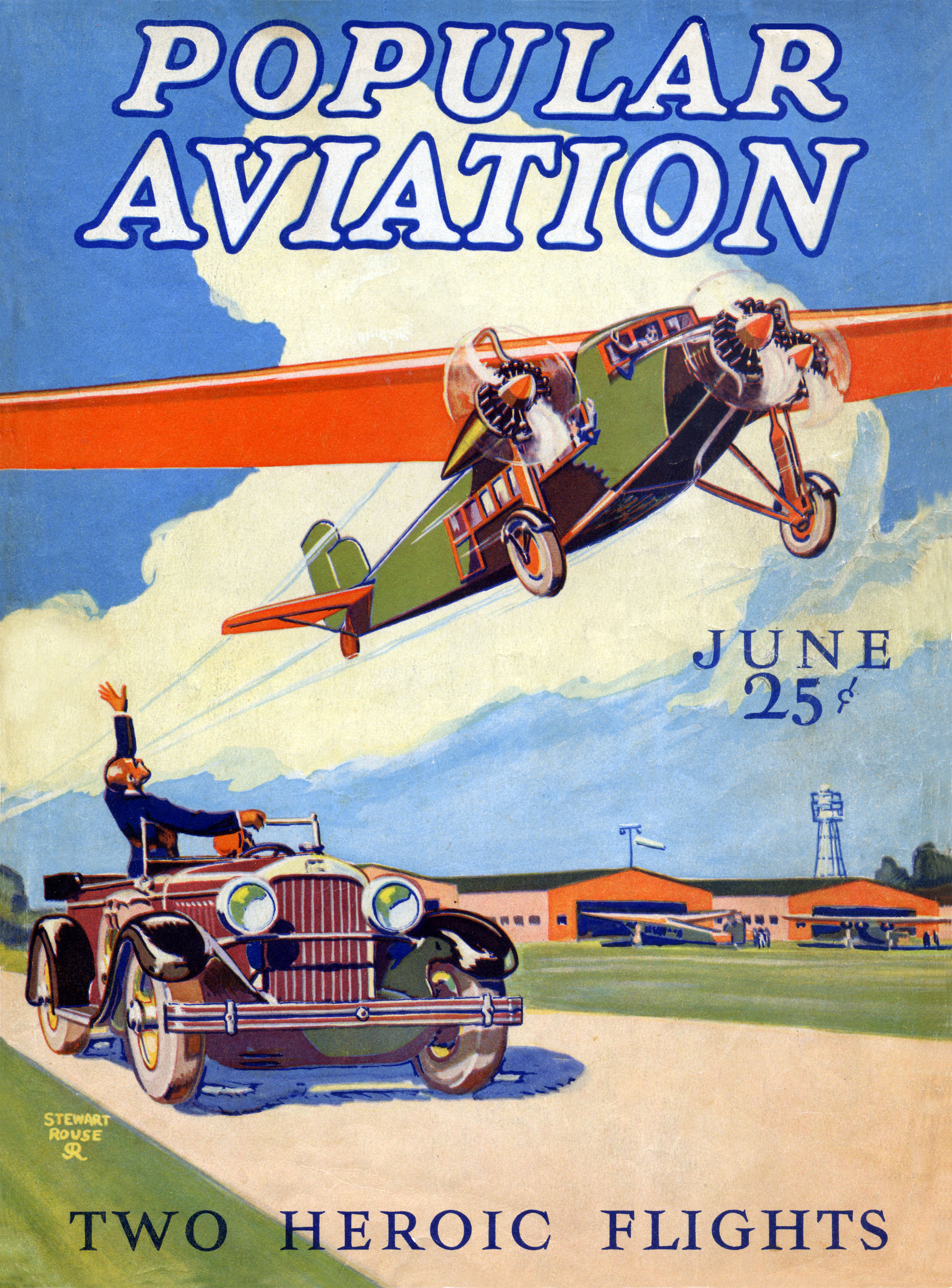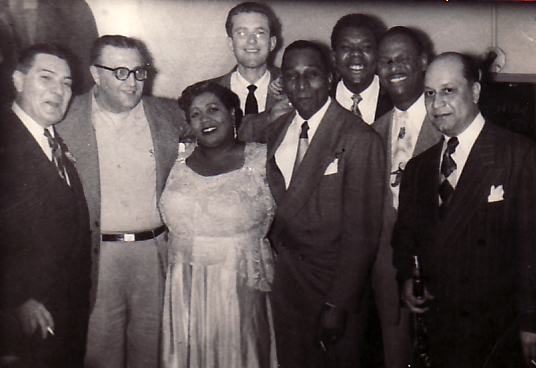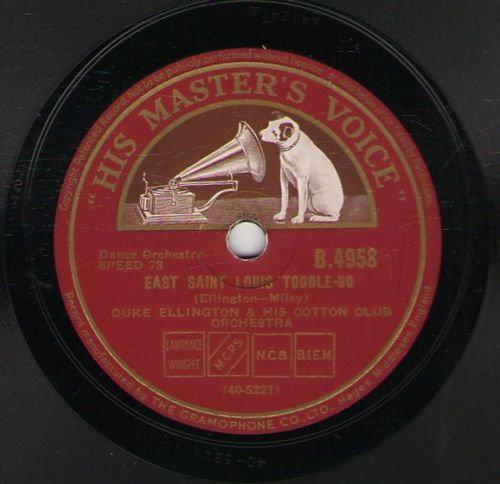|
Little Girl Blue (album)
''Little Girl Blue: Jazz As Played in an Exclusive Side Street Club'' is the debut album by Nina Simone. Recorded in late 1957, it was eventually released by Bethlehem Records in February 1959. Due to the length of time the album had taken to be released and the lack of any promotional single either immediately before or alongside the album, Simone would become disillusioned with Bethlehem and sign with Colpix Records in April 1959. She recorded the tracks for her second album - what would become '' The Amazing Nina Simone'' - the same month. However, in May Bethlehem finally released a single, 'I Loves You, Porgy' and gave Simone her first hit later that year, peaking at number 18 on the pop charts, and number 2 on the R&B charts. Helped by the profile of the single, the album too went on to become a chart success. In 1987, the track 'My Baby Just Cares For Me' became a massive UK and European hit. The album was reissued, now with the title of single, and with a new cover and the ... [...More Info...] [...Related Items...] OR: [Wikipedia] [Google] [Baidu] |
Album
An album is a collection of audio recordings issued on compact disc (CD), Phonograph record, vinyl, audio tape, or another medium such as Digital distribution#Music, digital distribution. Albums of recorded sound were developed in the early 20th century as individual Phonograph record#78 rpm disc developments, 78 rpm records collected in a bound book resembling a photograph album; this format evolved after 1948 into single vinyl LP record, long-playing (LP) records played at revolutions per minute, rpm. The album was the dominant form of recorded music expression and consumption from the mid-1960s to the early 21st century, a period known as the album era. Vinyl LPs are still issued, though album sales in the 21st-century have mostly focused on CD and MP3 formats. The 8-track tape was the first tape format widely used alongside vinyl from 1965 until being phased out by 1983 and was gradually supplanted by the cassette tape during the 1970s and early 1980s; the populari ... [...More Info...] [...Related Items...] OR: [Wikipedia] [Google] [Baidu] |
Trade Magazine
A trade magazine, also called a trade journal or trade paper (colloquially or disparagingly a trade rag), is a magazine or newspaper whose target audience is people who work in a particular trade or industry. The collective term for this area of publishing is the trade press. Overview Trade publications keep industry members abreast of new developments. In this role, it functions similarly to how academic journals or scientific journals serve their audiences. Trade publications include targeted advertising, which earns a profit for the publication and sales for the advertisers while also providing sales engineering–type advice to the readers, that may inform purchasing and investment decisions. Trade magazines typically contain advertising content centered on the industry in question with little, if any, general-audience advertising. They may also contain industry-specific job notices. For printed publications, some trade magazines operate on a subscription bus ... [...More Info...] [...Related Items...] OR: [Wikipedia] [Google] [Baidu] |
Lorenz Hart
Lorenz Milton Hart (May 2, 1895 – November 22, 1943) was an American lyricist and half of the Broadway songwriting team Rodgers and Hart. Some of his more famous lyrics include " Blue Moon", " The Lady Is a Tramp", "Manhattan", "Bewitched, Bothered and Bewildered", and "My Funny Valentine". Life and career Hart was born in Harlem, New York City, the elder of two sons, to Jewish immigrant parents, Max M. and Frieda (Isenberg) Hart, of German background. Through his mother, he was a great-grandnephew of the German poet Heinrich Heine. His father, a business promoter, sent Hart and his brother to private schools. (His brother, Teddy Hart, also went into theatre and became a musical comedy star. Teddy Hart's wife, Dorothy Hart, wrote a biography of Lorenz Hart.) Hart received his early education from Columbia Grammar School and entered Columbia College in 1913, before switching to Columbia University School of Journalism, where he attended for two years. [...More Info...] [...Related Items...] OR: [Wikipedia] [Google] [Baidu] |
Richard Rodgers
Richard Charles Rodgers (June 28, 1902 – December 30, 1979) was an American Musical composition, composer who worked primarily in musical theater. With 43 Broadway musicals and over 900 songs to his credit, Rodgers was one of the most well-known American composers of the 20th century, and his compositions had a significant influence on popular music. Rodgers is known for his songwriting partnerships, first with lyricist Lorenz Hart and then with Oscar Hammerstein II. With Hart he wrote musicals throughout the 1920s and 1930s, including ''Pal Joey (musical), Pal Joey'', ''A Connecticut Yankee (musical), A Connecticut Yankee'', ''On Your Toes'' and ''Babes in Arms.'' With Hammerstein he wrote musicals through the 1940s and 1950s, such as ''Oklahoma!'', ''Flower Drum Song'', ''Carousel (musical), Carousel'', ''South Pacific (musical), South Pacific'', ''The King and I'', and ''The Sound of Music''. His collaborations with Hammerstein, in particular, are celebrated for brin ... [...More Info...] [...Related Items...] OR: [Wikipedia] [Google] [Baidu] |
Arthur Hamilton
Arthur Hamilton Stern (born October 22, 1926),Stern, Arthur “Art” ''Mar-Ken.org''. Retrieved January 14, 2016 known professionally as Arthur Hamilton, is an American songwriter. He is best known for writing the song "Cry Me a River (1953 song), Cry Me a River", first published in 1953, and recorded by Julie London and numerous other artists. Biography Arthur "Art" Stern was born in Seattle, Washington, the son of songwriter and comedian Jacob Abraham "Jack" Stern (1896–1985) and Grace Hamilton Stern Leet (1883–1953). He moved as an infant with his family to Hollywood, California. He learned piano as a child, and also studied music theory and counterpoint. He later began using the name Arthur ...[...More Info...] [...Related Items...] OR: [Wikipedia] [Google] [Baidu] |
Don't Smoke In Bed (song)
"Don't Smoke in Bed" is a jazz song originally composed and recorded by Willard Robison and later associated with a recording by Nina Simone released on her 1958 debut album '' Little Girl Blue''. The song had been first recorded by Peggy Lee in 1947 with Dave Barbour and His Orchestra and released on her album ''Rendezvous with Peggy Lee'' (1948)."Rendezvous With Peggy Lee by Peggy Lee" at SecondHandSongs. The liner notes to ''Peggy Lee: The Singles Collection'' suggest that the song was mostly written by Lee & Barbour from a few lines by Robison as they were concerned that Robison would not live long enough to finish the song, and wanted to gift him with a valuable copyright to provide for his daughter after his passing. In the event, Robison lived another 20 years. Other artists who have recorded t ... [...More Info...] [...Related Items...] OR: [Wikipedia] [Google] [Baidu] |
Willard Robison
Willard Robison (September 18, 1894 – June 24, 1968) was an American vocalist, pianist, and composer of popular songs, born in Shelbina, Missouri. His songs reflect a rural, melancholy theme steeped in Americana and their warm style has drawn comparison to Hoagy Carmichael. Many of his compositions, notably " A Cottage for Sale", "Round My Old Deserted Farm", "Don't Smoke in Bed", "'Taint So, Honey, 'Taint So" and " Old Folks", have become standards and have been recorded countless times by jazz and pop artists including Peggy Lee, Nina Simone, Nat King Cole, Billy Eckstine, Bing Crosby and Mildred Bailey. "A Cottage for Sale" alone has been recorded over 100 times. Life and career In the early 1920s, Robison led and toured with several territory bands in the Southwest. He met Jack Teagarden in this period, whom he befriended. In the late 1920s, Robison organized the Deep River Orchestra, later hosting a radio show entitled ''The Deep River Hour'' in the early 1930s. Durin ... [...More Info...] [...Related Items...] OR: [Wikipedia] [Google] [Baidu] |
Mood Indigo
"Mood Indigo" is a jazz song with music by Duke Ellington and Barney Bigard and lyrics by Irving Mills. Composition Although Irving Mills—Jack Mills's brother and publishing partner—took credit for the lyrics, Mitchell Parish claimed in a 1987 interview that he had written the lyrics. The tune was composed for a radio broadcast in October 1930 and was originally titled "Dreamy Blues". It was "the first tune I ever wrote specially for microphone transmission", Ellington recalled. "The next day wads of mail came in raving about the new tune, so Irving Mills put a lyric to it." Renamed "Mood Indigo", it became a jazz standard." The main theme was provided by Bigard, who learned it in New Orleans, Louisiana from his clarinet teacher Lorenzo Tio, who called it a "Mexican Blues". Ellington's arrangement was first recorded by his band for Brunswick on October 17, 1930. It was recorded twice more in 1930. These recordings included Arthur Whetsel (trumpet), Tricky Sam Nanton (tr ... [...More Info...] [...Related Items...] OR: [Wikipedia] [Google] [Baidu] |
Irving Mills
Irving Harold Mills (born Isadore Minsky; January 16, 1894 – April 21, 1985) was an American music publisher, musician, lyricist, and jazz artist promoter. He sometimes used the pseudonyms Goody Goodwin and Joe Primrose. Personal Mills was born to a Jewish family in Odessa, Russian Empire, although some biographies state that he was born on the Lower East Side of Manhattan in New York City. His father, Hyman Minsky (1868–1905), was a hat maker who had immigrated from Odessa to the United States with his wife Sofia ''(née'' Sophia Dudis; born 1870). Hyman died in 1905, forcing Irving and his brother, Jacob ''(aka'' "Jack"; 1891–1979), to work odd jobs including bussing at restaurants, selling wallpaper, and working in the garment industry. By 1910, Mills was listed as a telephone operator. Mills married Beatrice ("Bessie") Wilensky (1896–1976) in 1911 and they subsequently moved to Philadelphia. By 1918, Mills was working for publisher Leo Feist. His brother, Jack, was ... [...More Info...] [...Related Items...] OR: [Wikipedia] [Google] [Baidu] |
Barney Bigard
Albany Leon "Barney" Bigard (March 3, 1906 – June 27, 1980) was an American jazz clarinetist known for his 15-year tenure with Duke Ellington. He also played tenor saxophone. Biography Bigard was born in New Orleans to Creole parents, Alexander and Emanuella Bigard. He had two brothers, Alexander Jr. and Sidney. His uncle, Emile Bigard, was a jazz violinist. He attended local schools and studied music and clarinet with Lorenzo Tio. In the early 1920s, he moved to Chicago, where he worked with King Oliver and others. During this period, much of his recording, including with clarinetist Johnny Dodds, was on tenor saxophone, which he played often with great lyricism, as on Oliver's "Someday Sweetheart". In December 1927, Bigard joined Duke Ellington's orchestra in New York. He played with Ellington until 1942. They played primarily at the Cotton Club until 1931, then toured almost nonstop for over a decade. With Ellington, he was the featured clarinet soloist, while also d ... [...More Info...] [...Related Items...] OR: [Wikipedia] [Google] [Baidu] |
Duke Ellington
Edward Kennedy "Duke" Ellington (April 29, 1899 – May 24, 1974) was an American jazz pianist, composer, and leader of his eponymous jazz orchestra from 1923 through the rest of his life. Born and raised in Washington, D.C., Ellington was based in New York City from the mid-1920s and gained a national profile through his orchestra's appearances at the Cotton Club in Harlem. A master at writing miniatures for the three-minute 78 rpm recording format, Ellington wrote or collaborated on more than one thousand compositions; his extensive body of work is the largest recorded personal jazz legacy, and many of his pieces have become standards. He also recorded songs written by his bandsmen, such as Juan Tizol's " Caravan", which brought a Spanish tinge to big band jazz. At the end of the 1930s, Ellington began a nearly thirty-year collaboration with composer-arranger-pianist Billy Strayhorn, whom he called his writing and arranging companion. With Strayhorn, he composed multipl ... [...More Info...] [...Related Items...] OR: [Wikipedia] [Google] [Baidu] |
Chris Connor
Mary Jean Loutsenhizer, known professionally as Chris Connor (November 8, 1927 – August 29, 2009) was an American jazz singer. Biography Chris Connor was born Mary Loutsenhizer in Kansas City, Missouri, to Clyde Loutsenhizer and Mabel Shirley. She became proficient on the clarinet, having studied for eight years during middle school and high school. She sang with the college band at the University of Missouri, playing at functions in Columbia, Missouri. In 1949 Connor recorded two songs with Claude Thornhill's band: "There's a Small Hotel" and "I Don't Know Why". With Jerry Wald's big band she recorded "You're the Cream in My Coffee", "Cherokee", " Pennies from Heaven", "Raisins and Almonds", and "Terremoto". Connor and Thornhill reunited in 1952 for a radio broadcast from the Statler Hotel in New York City for which she sang "Wish You Were Here", Come Rain or Come Shine", "Sorta Kinda", and "Who Are We to Say". She made her final recordings for HighNote: ''Haunted Heart'' ... [...More Info...] [...Related Items...] OR: [Wikipedia] [Google] [Baidu] |




